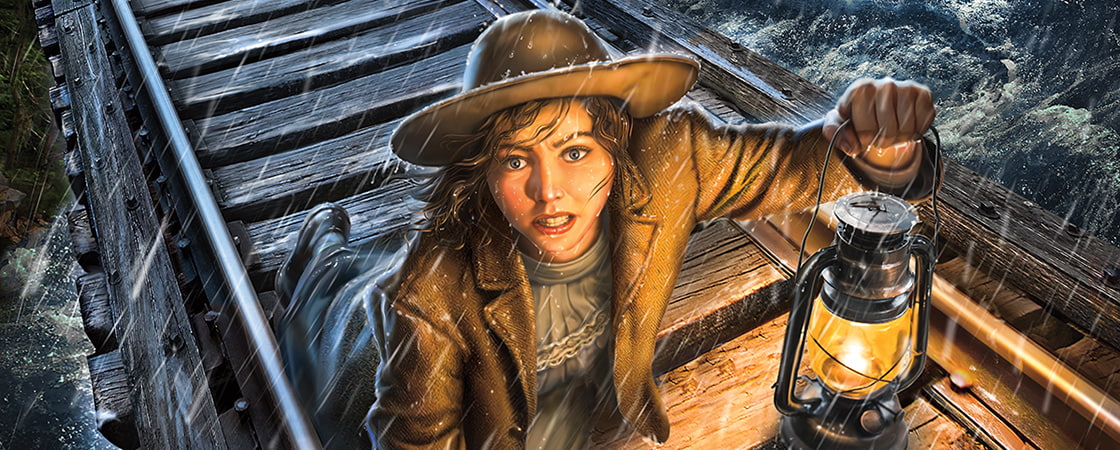Jim McMahon/Mapman ®
This is where Kate lived.
Alaska and Hawaii are not drawn to scale or in their proper places.
A wild storm rolled through the fields. It was a summer night about 150 years ago. Kate Shelley lived on her family’s farm in Iowa. The 17-year-old watched as huge raindrops splattered against her window. Nearby, water rushed through Honey Creek.
Kate worried about the bridge over the creek. A lot of trains crossed that bridge. In fact, a big train called the Midnight Express was heading toward the bridge that night.
Kate wondered: Would the bridge hold up through the treacherous storm?
A wild storm moved through the fields. It was a summer night about 150 years ago. Kate Shelley was a 17-year-old girl who lived on her family’s farm in Iowa. She watched as huge raindrops hit her window. A nearby creek filled with water. It was called Honey Creek.
Kate worried about the bridge over Honey Creek. A lot of trains crossed that bridge. In fact, a big train called the Midnight Express was heading toward the bridge that night.
Kate wondered to herself: Would the bridge hold up through the treacherous storm?

